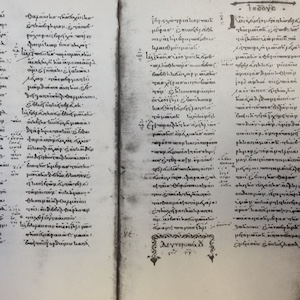The Septuaginta: incorporating new perspectives

Accepted: February 12, 2025
HTML: 116
All claims expressed in this article are solely those of the authors and do not necessarily represent those of their affiliated organizations, or those of the publisher, the editors and the reviewers. Any product that may be evaluated in this article or claim that may be made by its manufacturer is not guaranteed or endorsed by the publisher.
The Greek translation of the Hebrew (and Aramaic) text of the Bible is commonly called the Septuaginta. In this collection, there are Biblical books that are translated from Hebrew and Aramaic into Greek as well as Biblical books that were originally written in Greek. Studying how the translators went about is helpful when attempting to reconstruct the Old Greek text and the Hebrew underlying text on the basis of which it was rendered. In some cases, the Old Greek text and its revisions shed light on the evolution of the Hebrew Biblical text. Moreover, for some books or parts thereof, not a text resembling the Old Greek text as it left the hands of the translators, but a revision of that Greek text is transmitted. The earliest revisions came from Jewish hands and are most commonly associated with the names of Aquila, Theodotion and Symmachus. Their texts (or traces thereof) were being used by the later Christian revisers, such as Origen and Lucian. In the texts of the Old Greek as well as in the later revisions, one can observe the phenomenon of rewriting, which is also attested in texts of the Dead Sea Scrolls.
How to Cite

This work is licensed under a Creative Commons Attribution-NonCommercial 4.0 International License.
Copyright (c) 2025 The Author(s)
PAGEPress has chosen to apply the Creative Commons Attribution NonCommercial 4.0 International License (CC BY-NC 4.0) to all manuscripts to be published.

 https://doi.org/10.4081/peasa.54
https://doi.org/10.4081/peasa.54



